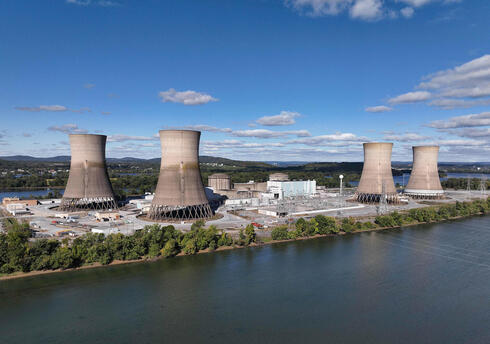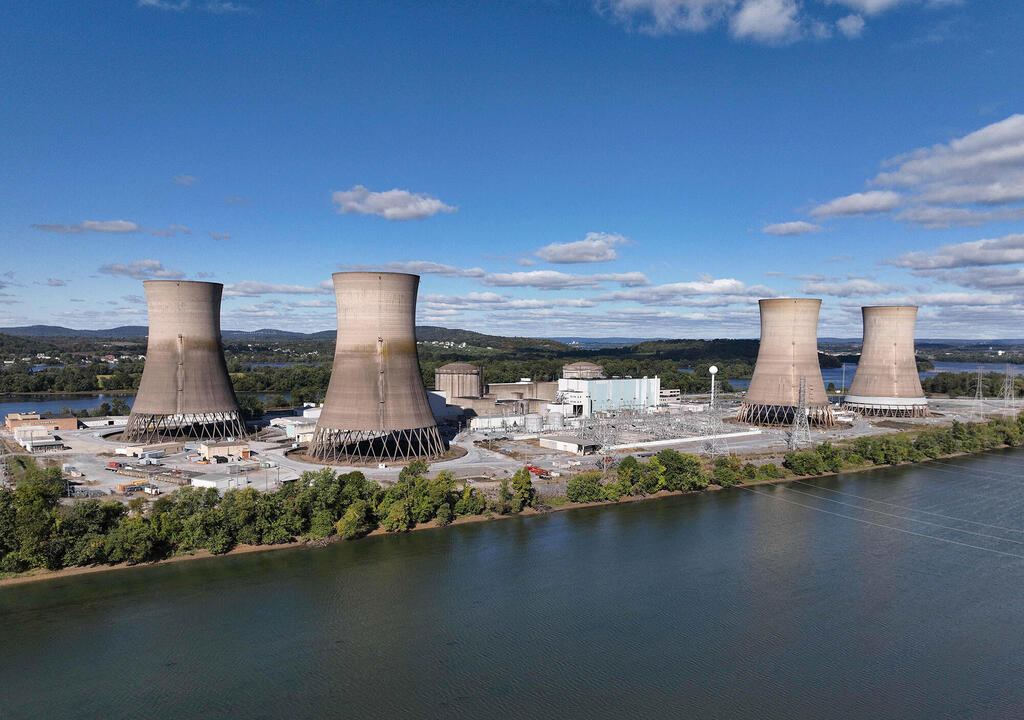
AI’s power problem: Why Microsoft, Google, and Amazon are betting big on nuclear energy
Faced with rising carbon emissions and energy demands, tech giants are reviving nuclear energy with new technologies that promise clean, 24/7 power to fuel the future of artificial intelligence.
After April 26, 1986, it seemed that the optimistic vision of nuclear energy had come to an end. The disaster at the Chernobyl nuclear reactor, the worst environmental disaster in human history, stunned the world and created consequences that still persist today. Seven years earlier, the nuclear accident at Three Mile Island in Pennsylvania had paralyzed the construction of new reactors in the United States for decades. The Chernobyl disaster reinforced the perception that this technology was simply too dangerous, making continued reliance on fossil fuels seem like a safer option. The Fukushima disaster in Japan in 2011 only further solidified this sentiment.
However, in recent years, against the backdrop of the worsening climate crisis and the need for carbon-free energy sources, attitudes toward nuclear energy have shifted. Leading the change are some of the largest technology companies in the world: Microsoft, Amazon, and Google. All have recently announced ambitious nuclear energy projects to help meet their emissions reduction goals, despite their skyrocketing energy consumption due to the artificial intelligence (AI) revolution.
1 View gallery


Three Mile Island in Pennsylvania, a nuclear reactor from the 1970s
(Photo: Chip Somodevilla/Getty Images/AFP)
In March, Amazon's cloud division acquired a data center in Pennsylvania from Talen Energy for $650 million. The data center receives its energy from the nearby Susquehanna nuclear reactor. "Amazon has an ambitious goal to reach net-zero emissions by 2040 and to rely entirely on renewable energy by 2025," the company explained. "To complement our wind and solar projects, which depend on weather conditions, we are also exploring other clean energy sources. This agreement is part of that effort."
About a month ago, Microsoft made an even bolder move: it signed an agreement with Constellation Energy to restart one of the reactors on Three Mile Island that was not damaged in the infamous accident. Under the agreement, Constellation will bring a reactor that has been shut down for five years back into operation by 2028, with Microsoft as the exclusive purchaser of all its energy output for 20 years. "This is a significant milestone in Microsoft's efforts to decarbonize the power grid and achieve negative carbon emissions for its operations," said Bobby Hollis, Microsoft's vice president for energy.
Last week, Google joined the trend, not with one reactor but with seven. The company announced it had signed an agreement to purchase energy from seven small modular nuclear reactors (SMRs) developed by Kairos Power. The first reactor is expected to be operational by 2030, with the remaining six following by 2035. Together, the reactors will supply 500 megawatts of clean energy.
SMRs represent a new type of nuclear reactor. The first design of this kind was approved by the U.S. Nuclear Regulatory Commission in January 2023, and these reactors are expected to be faster and simpler to build compared to traditional reactors. In August 2023, the construction of the first new nuclear reactor in the U.S. since the Three Mile Island accident was completed in Georgia, seven years behind schedule and at a cost of $31 billion, $17 billion over the original budget.
The costs and complexities associated with traditional reactors have long been a significant barrier to their widespread deployment, especially given past nuclear disasters. However, SMRs are intended to be cheaper, simpler to operate, and potentially safer than large-scale reactors.
For large technology companies, this represents a particularly attractive solution. In recent years, all of the tech giants have pledged to achieve net-zero carbon emissions by 2050 at the latest, with many aiming for earlier deadlines. However, the AI revolution of the past two years has disrupted these plans. Training and operating generative AI models require massive amounts of energy, and the surge in demand has outpaced the growth of renewable energy sources like wind and solar.
In July, Google acknowledged that its AI development efforts had led to a 48% increase in its carbon emissions since 2019, potentially putting its emissions targets at risk. In May, Microsoft revealed that its carbon emissions had risen by 30% since 2020, largely due to the construction of new data centers. This trend is expected to continue. In June, analysts from the investment firm Bernstein warned that AI could double the growth rate of electricity demand in the U.S., potentially exceeding supply within the next two years.
Faced with these challenges, companies are scrambling to find alternative energy sources, and the changing global attitude toward nuclear energy fits their needs. "The grid needs new power sources to support AI technologies that drive significant scientific innovation, improve business services, and promote competitiveness and economic growth," said Michael Terrell, Google's director of energy and climate. "Nuclear solutions provide a clean energy source that is available around the clock. Advancing these sources will help accelerate the decarbonization of power grids worldwide."
Despite the promise of SMRs, several hurdles remain. First, it is a new and largely untested technology—currently, only two such reactors are operational, one in Russia and one in China. With dozens of reactor designs under development, it is still unclear which will prove to be the simplest, most cost-effective, and safest. Additionally, SMRs rely on a type of highly enriched uranium known as HALEU, which is primarily supplied by Russia. Efforts to establish a supply chain in the U.S. have encountered resistance from local communities. The issue of handling nuclear waste from these reactors also remains unresolved.
Other ambitious nuclear technologies face even more complex challenges. In May 2023, Microsoft signed an agreement to purchase energy from Helion Energy, a company backed by Sam Altman, the founder and CEO of OpenAI. Helion is developing nuclear fusion technology, often referred to as the "holy grail of energy." While nuclear reactors, both traditional and SMRs, rely on nuclear fission (splitting an atomic nucleus to release energy), fusion aims to generate energy by fusing the nuclei of smaller atoms (e.g., fusing two hydrogen atoms to form helium). This process, which mimics the energy production in stars, releases massive amounts of energy—about 320,000 times more than burning a carbon atom—without generating radioactive waste.
Helion claims it can achieve commercial nuclear fusion by 2028. However, despite several breakthroughs in recent decades, most scientists believe it will take decades before fusion is commercially viable. Significant investments could potentially shorten this timeline.
In addition to technical challenges, cognitive barriers must also be addressed. According to an August survey by the Pew Research Center, 56% of Americans support adding nuclear energy to the U.S. power grid, up from 43% in 2016. However, this level of support is still significantly lower than that for solar (78%) and wind (72%). Opposition to nuclear projects can increase dramatically in communities near planned reactors, adding to the complexity and cost of an already expensive process.
Still, the involvement of tech giants could be a turning point. These companies bring not only substantial financial resources and lobbying power but also the potential to rebrand nuclear technology. Rather than focusing on the grim legacy of Three Mile Island and Chernobyl, the future could be associated with innovations like generative AI, autonomous vehicles, and clean energy. The question is whether this will be enough to overcome nuclear power’s image problem and address the logistical and technological hurdles of building new reactors, all while making a significant impact on the climate crisis in a timely and safe manner.














